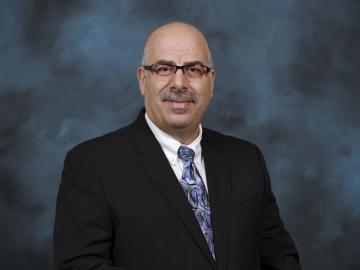
Filter News
Area of Research
- (-) Advanced Manufacturing (8)
- (-) National Security (33)
- Biological Systems (1)
- Biology and Environment (93)
- Building Technologies (2)
- Clean Energy (132)
- Computational Biology (1)
- Computational Engineering (3)
- Computer Science (6)
- Electricity and Smart Grid (2)
- Energy Sciences (1)
- Fuel Cycle Science and Technology (1)
- Fusion and Fission (33)
- Fusion Energy (4)
- Isotope Development and Production (1)
- Isotopes (27)
- Materials (91)
- Materials Characterization (2)
- Materials for Computing (18)
- Materials Under Extremes (1)
- Mathematics (1)
- Neutron Science (48)
- Nuclear Science and Technology (3)
- Quantum information Science (3)
- Sensors and Controls (1)
- Supercomputing (94)
- Transportation Systems (1)
News Topics
- 3-D Printing/Advanced Manufacturing (7)
- Advanced Reactors (1)
- Artificial Intelligence (7)
- Big Data (1)
- Bioenergy (1)
- Composites (2)
- Computer Science (5)
- Cybersecurity (10)
- Decarbonization (1)
- Environment (2)
- Fusion (1)
- Grid (1)
- High-Performance Computing (3)
- Machine Learning (6)
- Materials (6)
- Materials Science (1)
- National Security (18)
- Neutron Science (1)
- Nuclear Energy (3)
- Partnerships (3)
- Quantum Science (1)
- Security (3)
- Space Exploration (1)
- Sustainable Energy (4)
- Transportation (1)
Media Contacts

Stephen Dahunsi’s desire to see more countries safely deploy nuclear energy is personal. Growing up in Nigeria, he routinely witnessed prolonged electricity blackouts as a result of unreliable energy supplies. It’s a problem he hopes future generations won’t have to experience.
The Autonomous Systems group at ORNL is in high demand as it incorporates remote sensing into projects needing a bird’s-eye perspective.

A team of researchers from ORNL has created a prototype system for detecting and geolocating damaged utility poles in the aftermath of natural disasters such as hurricanes.

Ben Thomas recalled the moment he, as a co-op student at ORNL, fell in love with computer programming. “It was like magic.” Almost five decades later, he strives to bring the same feeling to students through education and experience in fields that could benefit nuclear nonproliferation.

U2opia Technology, a consortium of technology and administrative executives with extensive experience in both industry and defense, has exclusively licensed two technologies from ORNL that offer a new method for advanced cybersecurity monitoring in real time.

A partnership of ORNL, the Tennessee Department of Economic and Community Development, the Community Reuse Organization of East Tennessee and TVA that aims to attract nuclear energy-related firms to Oak Ridge has been recognized with a state and local economic development award from the Federal Laboratory Consortium.

The word “exotic” may not spark thoughts of uranium, but Tyler Spano’s investigations of exotic phases of uranium are bringing new knowledge to the nuclear nonproliferation industry.

Moe Khaleel has been selected to lead the National Sciences Security Directorate, or NSSD, at the Department of Energy’s Oak Ridge National Laboratory.

Oak Ridge National Laboratory researchers determined that designing polymers specifically with upcycling in mind could reduce future plastic waste considerably and facilitate a circular economy where the material is used repeatedly.

Using novel data sets and computing systems, researchers at ORNL are simulating how climate change affects the safety and security of the country.


